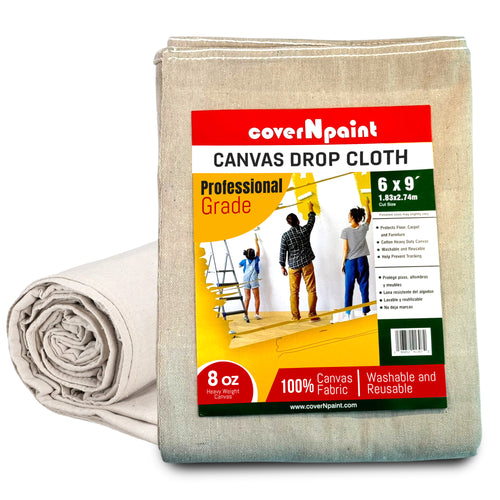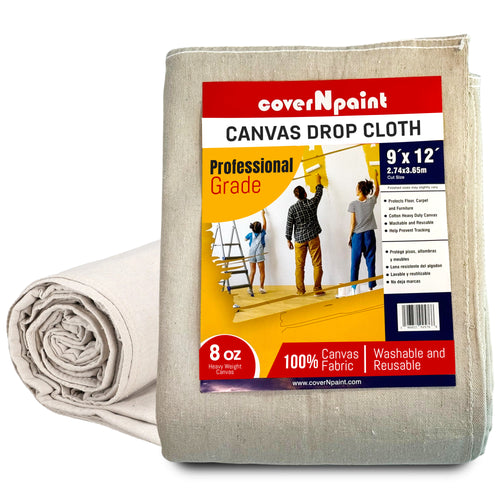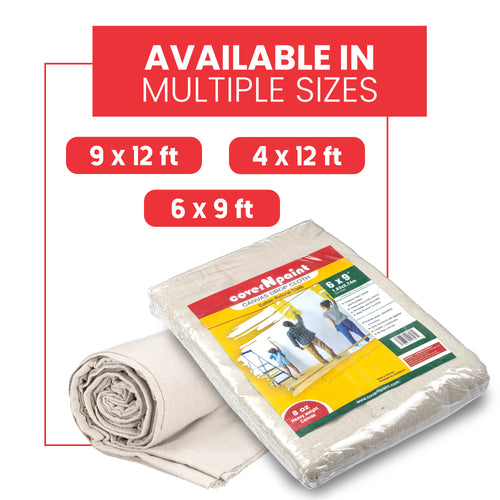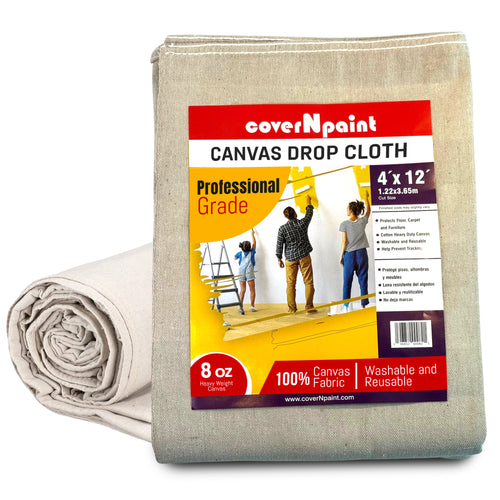Painting is one of the most satisfying ways to refresh a space, but it often comes with a hidden cost: waste. Many painters, whether professionals or DIY enthusiasts, rely on disposable materials to protect floors and furniture. Using painters drop cloths repeatedly, especially canvas drop cloths, offers a simple yet effective way to minimize environmental impact while maintaining superior protection during painting projects.
In this guide, we explore how reusing drop cloths not only reduces waste but also improves efficiency, saves money, and contributes to more sustainable painting practices.
The Environmental Impact of Disposable Drop Cloths
Many painters opt for plastic or paper drop cloths for convenience. While these materials can be used once and discarded, they contribute significantly to environmental waste:
-
Plastic drop cloths: Often non-biodegradable and difficult to recycle. They can linger in landfills for hundreds of years.
-
Paper or thin fabric sheets: These materials often tear or become saturated with paint, resulting in frequent disposal.
In contrast, canvas drop cloths are durable, reusable, and eco-friendly, making them an environmentally responsible alternative.
How Reusing Painters Drop Cloths Reduces Waste
1. Minimizing Single-Use Materials
By reusing paint drop cloths, painters reduce their reliance on single-use plastics and papers. Each time a canvas drop cloth is cleaned and reused, it prevents the equivalent amount of waste that would have been generated by disposable alternatives.
2. Reducing Carbon Footprint
Manufacturing disposable drop cloths requires raw materials, energy, and transportation. Reusable painters drop cloths reduce the demand for these resources, thereby lowering the carbon footprint associated with painting projects.
3. Promoting Sustainable Habits
Using drop cloths multiple times encourages environmentally conscious behaviors. DIY enthusiasts learn to clean, store, and maintain canvas drop cloths, creating long-lasting habits that extend beyond painting projects.
Why Canvas Drop Cloths Are Ideal for Eco-Friendly Painting
Canvas is an ideal material for reusable drop cloths due to its durability and absorbency. Here’s why:
-
High Absorption: Canvas fibers soak up spills effectively, preventing paint seepage and reducing the risk of floor damage.
-
Durability: A quality canvas drop cloth can last for dozens of projects if maintained properly.
-
Washable and Reusable: Canvas can be cleaned easily, allowing multiple reuses without compromising performance.
-
Eco-Friendly Sourcing: Many modern canvases drop cloths are made from organic or sustainably sourced cotton, further minimizing environmental impact.
For more detailed insights into sustainable canvas drop cloths, check out our blog on Eco-Friendly Advantages of Using a Canvas Painters Drop Cloth in 2025.
Common Pain Points and How Reusable Drop Cloths Solve Them
Pain Point 1: Excessive Waste
Disposable sheets and plastic liners generate significant waste with every project.
Solution: Using a durable painters drop cloth reduces the need for constant replacements, cutting down on landfill contributions.
Pain Point 2: Cost of Constant Replacements
Regularly buying disposable drop cloths increases project costs over time.
Solution: Investing in a reusable canvas drop cloth pays off over multiple projects, offering both protection and savings.
Pain Point 3: Messy Cleanup
Thin drop cloths can tear or shift, causing paint to seep onto surfaces, creating more cleanup work.
Solution: Properly maintained canvas drops cloths provide stable, absorbent coverage that simplifies cleanup and prevents damage.
Pain Point 4: Lack of Sustainability
Many painters want to reduce their environmental footprint but struggle to find eco-friendly alternatives.
Solution: Reusing paint drop cloths aligns with sustainable practices by reducing waste, lowering production demand, and encouraging responsible habits.
Practical Tips for Reusing Painters Drop Cloths
-
Shake Off Debris Immediately: Remove dust and dried paint flakes after each use to prevent buildup.
-
Spot Clean Stains: Use mild detergent or soap on fresh spills. Avoid harsh chemicals that weaken the fibers.
-
Wash Properly: Machine wash on gentle cycles or hand wash with cold water. Air-dry thoroughly.
-
Store Correctly: Fold or roll the drop cloth and store in a dry, cool space to prevent mildew.
-
Rotate Cloths: Use different cloths for different projects or layers to extend their lifespan.
By following these simple maintenance steps, DIYers and professionals can maximize canvas drop cloth efficiency while maintaining eco-friendly painting practices.
Industry Update: Trends in Eco-Friendly Painting Tools
The painting industry is evolving in 2025 to emphasize sustainability:
-
Reusable Canvas Cloths: Growing demand for long-lasting, washable drop cloths.
-
Organic and Recycled Fibers: Companies are adopting sustainable cotton and blends for drop cloth manufacturing.
-
Multi-Functional Products: Canvas drop cloths with slip-resistant backing or water-resistant coatings are becoming common.
Staying informed about these trends helps painters and DIYers make smarter, environmentally conscious purchasing decisions.
A Curiosity-Building Note
Many painters are surprised to learn how much impact small changes can make. Proper cleaning, folding, and storage of painters drop cloths not only extends their life but significantly reduces environmental waste. Even minor adjustments in how you use canvas drop cloths can lead to noticeable cost savings and eco-friendly results. Companies like coverNpaint USA highlight these strategies to help both professionals and DIYers adopt sustainable painting habits effectively.
FAQs
Q1: How many times can a canvas drop cloth be reused?
With proper maintenance, a canvas drop cloth can last for dozens of painting projects.
Q2: Are reusable drop cloths more cost-effective than disposable ones?
Yes. Investing in durable painters drop cloths reduces the need for constant replacements, saving money over time.
Q3: Can canvas drop cloths protect delicate surfaces?
Absolutely. The absorbent fibers and weight of canvas drop cloths provide excellent coverage for hardwood, tile, and carpeted floors.
Q4: How should I clean a paint drop cloth for multiple uses?
Shake off debris, spot-treat stains with mild detergent, wash gently, and air-dry completely before storing.
Q5: Do reusable drop cloths contribute to eco-friendly painting?
Yes. They reduce landfill waste, lower production demand for single-use products, and encourage sustainable painting habits.













